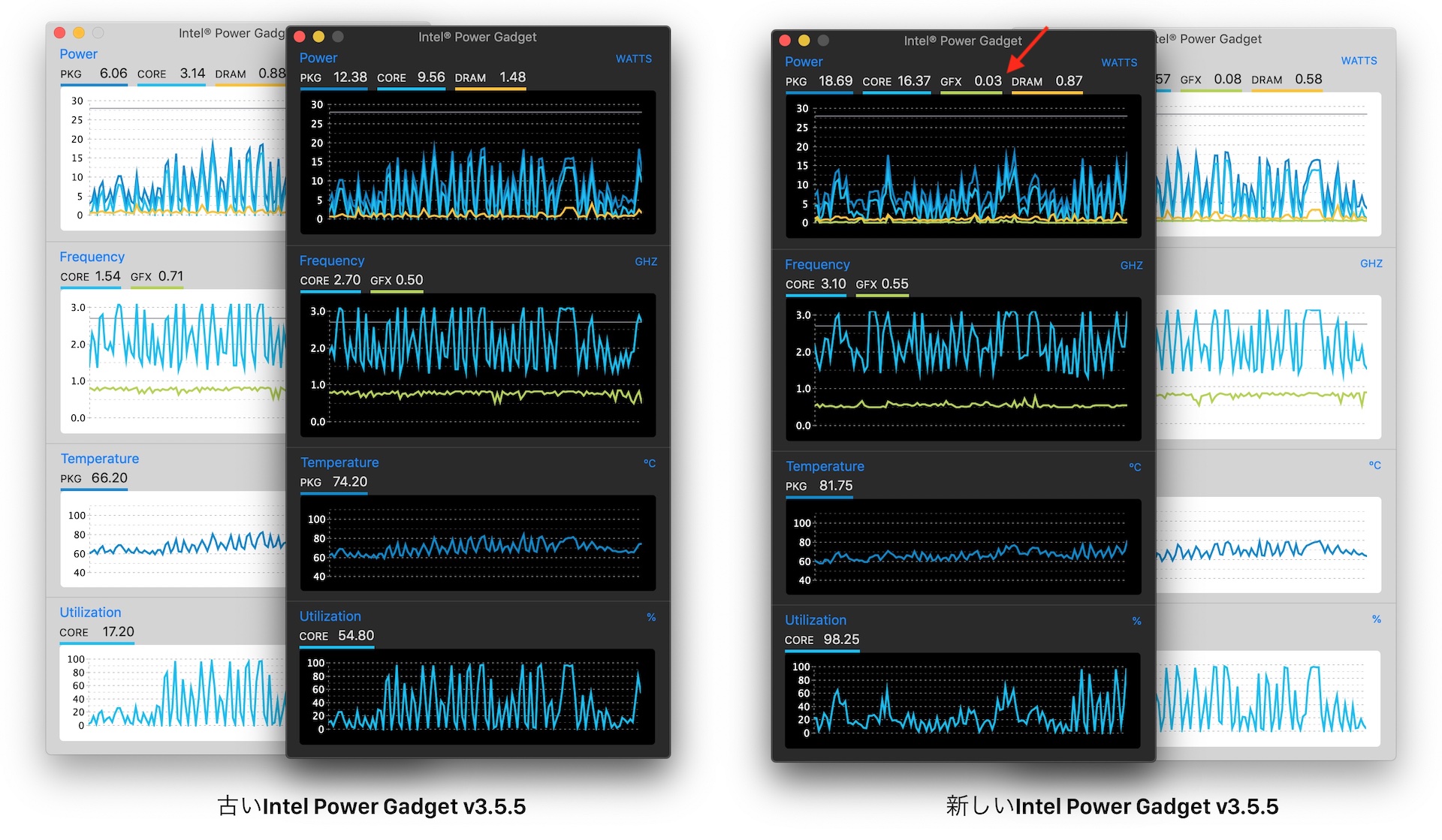

Higher the frequency, greater will be the accuracy of the data but poorer will be the performance of the system. Data is acquired from specific MSRs at a fixed sampling frequency.
#Intel power gadget core req code
Sample code called “” to use Intel® Power Gadget’s DLL is available for download at the bottom of this page 3.API of Intel® Power Gadget 3.1 Concept of Samplingįor a good understanding of the API, it is essential to be familiar with the concept of sampling.


Follow the installer prompt instructions to complete installation.Download the appropriate Intel® Power Gadget installation package on your system.For more details on the API, please refer to subsequent sections. The DLL serves as a C++ Application Programming Interface (API). This data can be viewed on a Graphical User Interface (GUI) and/or logged for a required duration of time.ĭevelopers may use this data to create their own application by exploiting the Dynamic-Link Library (DLL) used by the Intel® Power Gadget. The supported MSRs are correlated with three MSR functions as described in Table 1. The PROCHOT feature is available only in 3rd Generation Intel® Core™ processors or later. The data is obtained from the Model Specific Registers (MSRs) and energy counters that are available only in 2nd Generation Intel® Core™ or later processors.
#Intel power gadget core req windows
Intel® Power Gadget for Windows is an application which presents real-time data about a 2 nd generation or later Intel® Core processor regarding current estimated processor power, package power limit, current processor frequency, base frequency, GT frequency, current temperature, maximum temperature, proc hot (when package temperature exceeds max temperature) timestamps and elapsed time. Contact Intel Representatives for enabling details.Authors: Seung-Woo Kim, Joseph Jin-Sung Lee, Vardhan Dugar, Jun De Vega 1.Introduction 1.1 About Intel® Power Gadget for Windows Dynamic Tuning is configured by system manufacturers dynamically optimizing the processor power based on the current platform thermal and power delivery conditions. The Intel Dynamic Tuning (DTT) is recommended for performance improvement in mobile platforms.Implementation of Intel® Turbo Boost Technology 2.0 only requires configuring PL1, PL1, Tau and PL2.Turbo Time Parameter (Tau): An averaging constant used for PL1 exponential weighted moving average (EWMA) power calculation.Power Limit 4 (PL4): A limit that will not be exceeded, the PL4 power limiting algorithms will preemptively limit frequency to prevent spikes above PL4.Power Limit 3 (P元): A threshold that if exceeded, the P元 rapid power limiting algorithms will attempt to limit the duty cycle of spikes above P元 by reactively limiting frequency.Power Limit 2 (PL2): A threshold that if exceeded, the PL2 rapid power limiting algorithms will attempt to limit the spike above PL2.PL1 should not be set higher than thermal solution cooling limits. Power Limit 1 (PL1): A threshold for average power that will not exceed - recommend to set to equal Processor Base Power (a.k.a TDP).The package power control settings of PL1, PL2, P元, PL4, and Tau allow the designer to configure Intel® Turbo Boost Technology 2.0 to match the platform power delivery and package thermal solution limitations.


 0 kommentar(er)
0 kommentar(er)
